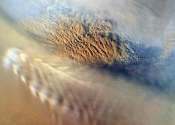Tonga eruption: we are watching for ripples of it in space
The ongoing volcanic eruption in Tonga began in December 2021, but it wasn't until 5:15pm local time on January 15 2022 that the powerful explosion occurred. It generated an enormous cloud of ash, earthquakes, and tsunamis ...









